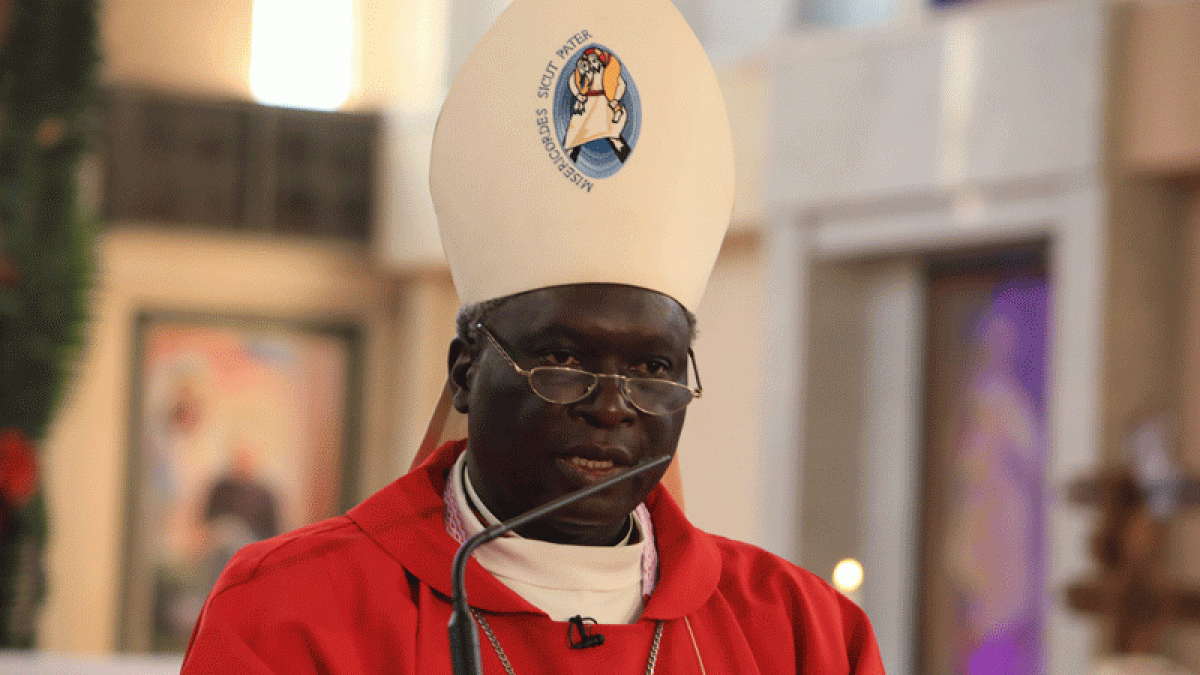Welcome to our comprehensive blog analysis of the impactful case of Bishop! In this article, we will delve into the background and context of the case, explore the key arguments presented by both sides, dissect the decision and reasoning of the Court, and examine its profound impact on LGBTQ+ rights and marriage equality in the United States. Get ready for an informative journey as we reflect on the lasting significance of Bishop. So grab a cup of coffee (or your beverage of choice) and let’s dive right in!
Background and context of the case
To fully grasp the impact of Bishop, it’s crucial to understand the background and context surrounding this landmark case. It all began in 2015 when Jim Obergefell, a resident of Ohio, sought legal recognition of his marriage to his partner John Arthur. At that time, same-sex marriage was not recognized in their home state.
The couple had tied the knot in Maryland, where same-sex marriage was already legal. However, when John passed away due to illness, Ohio refused to list Jim as his spouse on the death certificate. This denial sparked a legal battle that ultimately reached the Supreme Court.
Joined by several other same-sex couples from different states across America who faced similar challenges with their marriages being unrecognized or disregarded elsewhere, Obergefell v. Hodges became a consolidated case representing a national fight for LGBTQ+ rights and equality.
The fundamental question before the Court was whether denying same-sex couples the right to marry violated their basic constitutional rights under due process and equal protection principles enshrined in the Fourteenth Amendment. This historic case brought immense attention not only within legal circles but also among advocates for LGBTQ+ rights nationwide.
Stay tuned as we explore further into this captivating saga!
Key arguments presented by both sides
When it comes to the case of Bishop, there were two distinct sides with their own set of compelling arguments. On one side, proponents argued that marriage should be defined as a union between a man and a woman based on traditional values and religious beliefs. They contended that changing this definition would undermine the institution of marriage itself.
Opponents, however, advocated for equality and recognition of same-sex marriages. They highlighted the importance of equal rights for all individuals, regardless of sexual orientation. These advocates argued that denying same-sex couples the right to marry was discriminatory and violated their constitutional rights.
Supporters of traditional marriage emphasized procreation as an essential purpose behind its preservation. They believed that only opposite-sex unions could naturally produce children and provide them with optimal environments for growth.
Contrarily, those in favor of LGBTQ+ rights stressed love, commitment, and stability as fundamental aspects shared by both heterosexual and homosexual couples alike. They maintained that legalizing same-sex marriages would promote societal acceptance without undermining traditional unions.
The debates surrounding these key arguments were intense and deeply rooted in personal beliefs, cultural norms, religious doctrines, civil liberties, and social justice principles.
Decision and reasoning of the Court
The decision and reasoning of the Court in the Bishop case marked a significant milestone in LGBTQ+ rights and marriage equality in the United States. In this landmark ruling, the Court held that denying same-sex couples the right to marry violated their constitutional rights.
The Court’s reasoning was rooted in the principles of equal protection and due process under the law. It recognized that denying same-sex couples the right to marry not only stigmatized them but also denied them access to numerous legal protections, benefits, and obligations afforded to opposite-sex couples.
The Court emphasized that marriage is a fundamental right that should be available to all individuals regardless of their sexual orientation. It rejected arguments asserting tradition or religious beliefs as justifications for excluding same-sex couples from marriage.
Moreover, the Court highlighted how societal attitudes towards LGBTQ+ individuals had evolved. It noted that public opinion increasingly supported marriage equality and recognized that discrimination against same-sex couples harmed both them and their children.
By affirming the equal dignity and worth of LGBTQ+ individuals, this decision marked a turning point in American history. It provided legal recognition and protection for countless same-sex couples who had long fought for their love to be acknowledged on an equal footing with heterosexual relationships.
Through its reasoned analysis and commitment to protecting individual rights, Bishop v. United States has left an indelible impact on LGBTQ+ rights by advancing marriage equality across America. This pivotal ruling continues to shape our society today by fostering greater inclusivity while challenging discriminatory practices based on sexual orientation
Impact on LGBTQ+ rights and marriage equality in the United States
The impact of the Bishop case on LGBTQ+ rights and marriage equality in the United States cannot be understated. This landmark decision by the Supreme Court had far-reaching implications for the LGBTQ+ community, solidifying their right to marry and enjoy equal protection under the law.
Before Bishop, same-sex couples faced significant legal barriers when it came to marriage. Many states had laws that defined marriage as exclusively between a man and a woman, effectively denying same-sex couples the right to marry. This created a patchwork of unequal treatment across the country, with some states recognizing same-sex marriages while others did not.
The key argument presented by opponents of marriage equality was that allowing same-sex couples to marry would undermine traditional notions of marriage. They claimed that it went against religious beliefs and societal norms.
However, in its decision, the Supreme Court held that denying same-sex couples the right to marry violated both due process and equal protection principles enshrined in the Constitution. The Court recognized that prohibiting same-sex marriages denied these individuals important legal benefits and protections.
This ruling marked a major turning point for LGBTQ+ rights in America. It paved the way for greater acceptance and recognition of same-sex relationships across all 50 states. Same-sex couples could now legally marry and enjoy all associated benefits such as inheritance rights, healthcare coverage, tax advantages, and immigration benefits, among others.
The impact extended beyond just legal recognition; it also helped shift public opinion on LGBTQ+ issues. As more people saw loving committed relationships being celebrated regardless of gender identity or sexual orientation, attitudes towards homosexuality began to change.
While progress has been made since Bishop was decided in 2015 – including subsequent rulings affirming LGBTQ+ rights – there is still work to be done. Discrimination against LGBTQ+ individuals continues to persist in various forms, highlighting an ongoing need for advocacy efforts aimed at achieving full equality under the law.
In conclusion, Bishop’s impact on LGBTQ+ rights and marriage equality in the United States cannot be overstated. It provided a legal foundation for the same
Reflections on the lasting impact of Bishop
As we reflect upon the landmark case of Bishop and its impact on LGBTQ+ rights and marriage equality in the United States, it becomes clear that this decision has left a lasting imprint on our society. The Supreme Court’s ruling not only affirmed the fundamental right to marry for same-sex couples but also set a precedent for future cases involving discrimination based on sexual orientation.
One of the most significant effects of the Bishop decision is the advancement it brought to LGBTQ+ rights. By recognizing same-sex marriages as equal under the law, this ruling provided legal protections and benefits to countless individuals across the country. It sent a powerful message that love knows no gender, and everyone deserves access to marriage regardless of their sexual orientation.
Moreover, Bishop played an instrumental role in shaping public opinion about LGBTQ+ rights. The visibility and recognition granted by this decision helped break down societal barriers and challenge long-held prejudices. It fostered greater acceptance and understanding among communities, paving the way for further progress towards equality.
The impact of Bishop extends beyond mere legalities; it has had profound social implications as well. By acknowledging same-sex marriages as valid unions, society was challenged to reevaluate traditional notions of family structure and redefine what constitutes a loving partnership. This shift in perspective has led to more inclusive narratives surrounding love, relationships, and family dynamics.
However, despite these positive changes ushered in by Bishop, challenges remain ahead. While marriage equality became law nationwide with this decision, there are still many areas where LGBTQ+ individuals face discrimination – from employment practices to housing opportunities. The lasting impact of Bishop serves as a reminder that while progress has been made towards achieving full equality for all members of our society, there is still work to be done.
In conclusion (without using those exact words), Understanding the Impact of Bishop reveals how one court case can have far-reaching consequences that transcend legal boundaries alone. Through its affirming stance on same-sex marriage, the Supreme Court not only recognized the rights of LGBTQ+ individuals.


